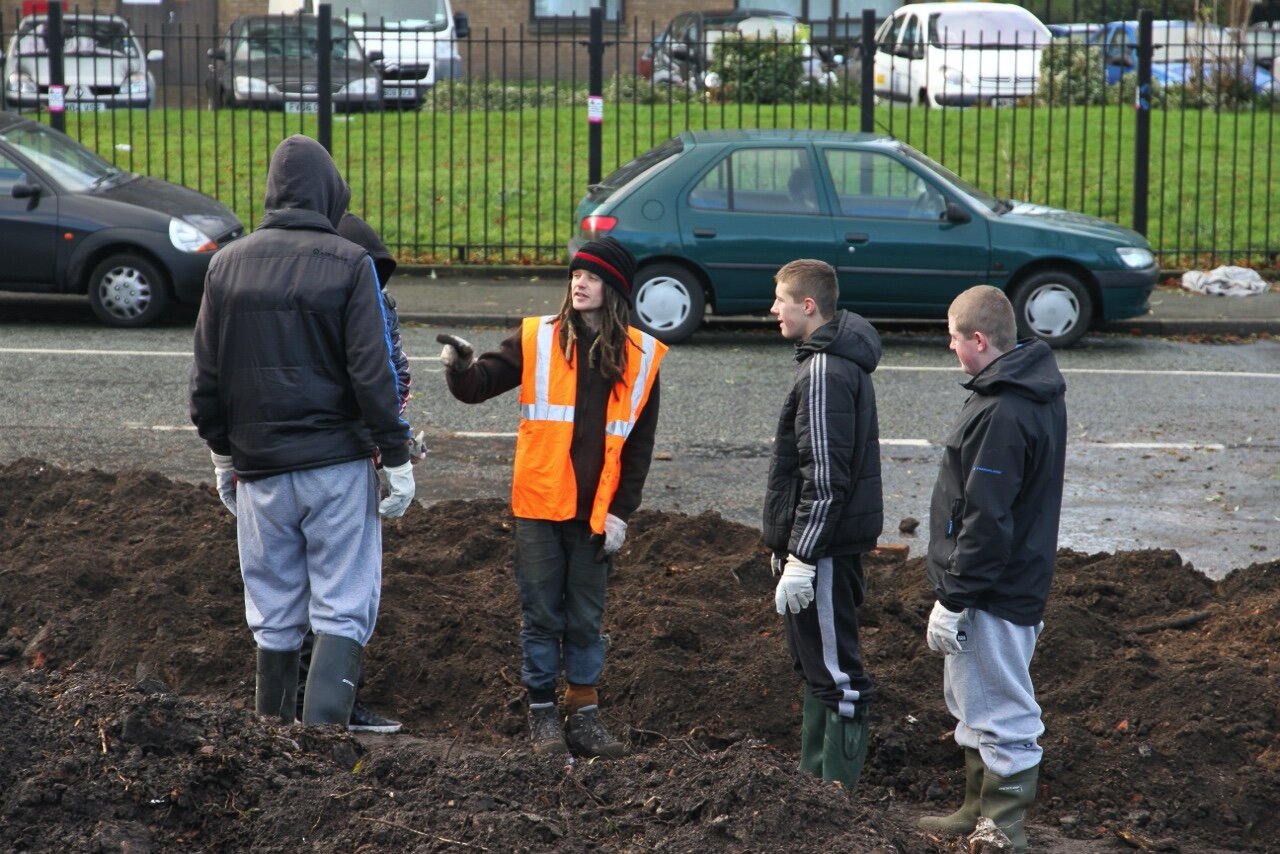
















On first visiting the site it had become a dumping ground - microwaves to washing machines, hypodermic needles mixed with kitchen sinks. Initially, the area was cleaned removing 10+ skips of electronic waste and 4000+ broken bricks. The design of the site used 7 horizontal lines across the landscape to enhance solar capture. Each line was approximately 30 m long, and 8 m between each line. The lines formed the framework for a range of ecological assets, including bio trenches, hugel mounds, fruit tree layer and fungi pathways. The bio trenches, hugel mounds were backfilled with more than 30 tons of fertile organic soil, intertwined with a high amount of biomass. The mound formed the platform for the fruit tree layer and fruit tree layer formed the beginnings of the forest garden structure. Across the seven mounds 70+ fruits trees, 120 Shrubs, 120 leafy perennials were planted. There was significant attention given to fungi & mushroom reintroduction, particularly oyster Mushrooms for decomposing properties and mycorrhizal fungi supporting the connectivity of the landscape.
Location - Manchester. Duration - 3 Years. Budget £90,000.
